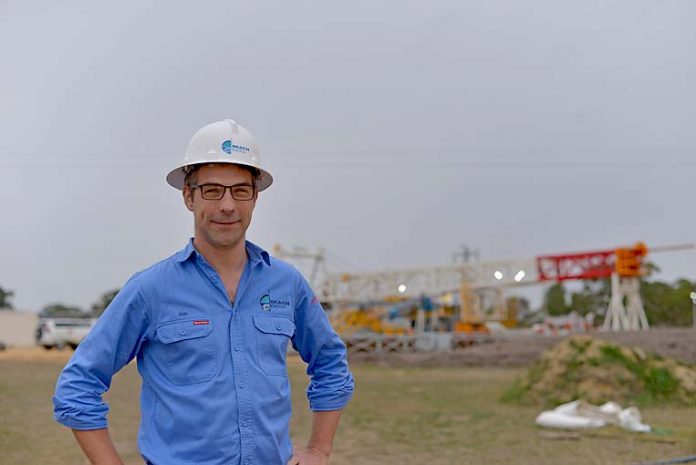

THE Limestone Coast’s expanding conventional gas mining sector’s social and economic impact has been explored in a newly-released report by the CSIRO.
The study – titled Understanding Natural Gas Impacts and Opportunities – was undertaken by the Gas Industry Social and Environment Research Alliance (GISERA).
According to the report, the project aimed to assist community understanding and inform public policy development.
This aims to “minimise misinformation and maximise” opportunities in the region’s burgeoning gas industry.
The study was given the green light by the former Labor Government in 2018 amid some community concerns over the region’s expanding natural gas industry in the Penola and Nangwarry district.
The announcement coincided with the government at the time pouring millions of dollars into the region’s exploration and drilling sector and unlocking expansive new exploration areas in the Limestone Coast.
The report – which is a snapshot of regional stakeholder views – was tabled at a Grant District Council meeting this week.
Beach Energy South East regional manager Jon Conti welcomed the report given the companies agenda to step up gas production.
“Beach is proud to build upon the long-standing coexistence of our industry with primary producers in the South East,” Mr Conti said.
“Through engaging in an open and honest way, we have developed positive relationships with landholders, cultural heritage groups, local businesses, councils and the community,” Mr Conti said.
He said Beach had supported nearly 70 jobs and engaged with 45 local companies in the past year.
“Our ongoing presence means that our local investment in and around the Penola community will continue to be significant,” Mr Conti said.
“Natural gas also provides important products used by primary industries such as ammonia, which is used in fertilisers and in the fermentation process for brewing and wine-making.”
At this week’s Grant District Council meeting, council’s economic development adviser said the report appeared to be “prompted by the gas industry”.
He said there appeared to be a positive shift in community attitudes towards conventional gas operations.
Adding to discussion, deputy mayor Cr Gill Clayfield said it appeared the report was heavily weighed on the side of the industry.
According to the report, conventional gas activities had “generally” been accepted by primary producers over a long period.
“A shift in attitudes to the gas industry occurred around 2014 when the potential for development using unconventional gas technology became apparent in the community,” the report said.
The document said demonstrating how the industry could co-exist with the clean, green image would be important.
“For example, indicating the potential size and scope of the conventional gas industry as a relatively small footprint may be helpful in allaying concerns.”
The report said the relatively small size and rate of development of the conventional gas industry had facilitated a common acceptance and generally positive relationship between the primary industry and gas activities.
But there is a “perceived” lack of large and obvious local economic benefit that is contributing to a common community view the potential benefits will be outweighed by the risks.
“A clearer rationale as to why and how conventional gas development is needed in the area for stakeholders to consider the gas industry to be of net benefit would assist local stakeholders,” the report said.
“Local stakeholders value the ‘Clean and Green’ image of the region targeted in regional growth strategies.
“It was not clear that further gas industry development fitted comfortably within the target regional image and reputation.”
As found in previous studies from other regions, stakeholders may not be prepared to compromise their concern over the potential for environmental and reputational risk when weighing up costs and benefits.
Stakeholders also felt communication of important information on issues such as industry regulation or monitoring was too slow, allowing communications from polarised voices to dominate.
“Although very different and largely incomparable, communication referring to intensive coal-seam gas developments in Queensland and similar regions have influenced perceptions.”
Moreover, stakeholders raised concerns that efforts to contribute realistic views to the debate to help protect the regional image could do damage to that which they seek to protect by bringing wider public attention to the gas developments in the region.
“Balance within the community debate may benefit from greater engagement by those in the community who hold the middle ground,” the report said.
Finally, the value of the “middle ground” or ‘quiet’ community members could be explored to provide greater diversity of opinion in important community discussions for large developments.
GISERA is a collaboration between CSIRO, commonwealth and state governments and industry established to undertake publicly-reported independent research.







